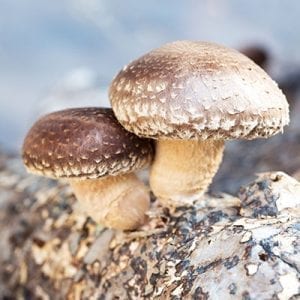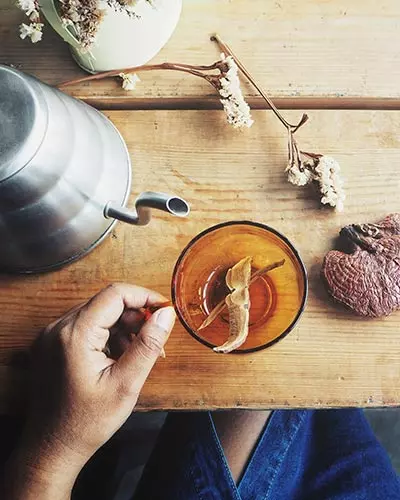Mushroom growing is both a science and an art form, and many people have developed their own unique methods for growing mushrooms. Some of these methods are good, some are labor intensive, other methods yield high volume or special quality fruit bodies.
Over the many years we have been working and consulting in this field we have seen many methods, everything from in-ground growing in Mexico and Africa, to the highest tech autoclave based method used by the multinational agribusiness giants.
Most of the books published today start out with the assumption that you have plenty of money to go out and buy the most expensive of boilers and baggers and autoclaves. In our experience, this is not usually the case especially when you are just starting out. So we would like to offer the benefit of our experience here, and show you some low tech methods to growing mushrooms that work well and can be accomplished for a low cost.
The Goal of Any Mushroom Farmer Should Be: The Production of High Volume Mushrooms at a Low Cost

That is, in a reasonable amount of time and without too much waste, contamination or expense in new equipment. Further goals should be to have a system simple enough that you can easily train common farm laborers to perform every step of the process.
Since most agricultural workers are not college educated microbiologists, it is more practical to simplify the system as much as possible so anyone can be trained to do the work, rather than depending on the availability of trained personnel that already know all the concepts involved.
The Goals of Growing Mushrooms
High Yield
Every common strain of mushroom can be grown at 100% Biological efficiency or more, and in fact, has to be if the project is to be successful. Often in Oyster cultivation 200% BE can be accomplished. Even with Shiitake, Lions Mane, or Maitake, 100% BE is quite possible to achieve with even minimal attention to your process. So what is this BE and how is it measured?
Biological Efficiency
Abbreviated BE, is the most important and the most basic of all measurements in mushroom cultivation. BE is the comparison of the dry weight substrate to the fresh harvested mushrooms. In other words, we all buy our substrate in the dry form, like sawdust as an example.
If you buy 1000 pounds of dry weight sawdust, and you are able to harvest 1000 pounds of fresh mushrooms, that is a 100% BE. If you start with 1000 pounds dry straw, and harvest 1500 pounds of fresh Oyster Mushrooms, that is a BE of 150%.
Keep it always in mind that 100% BE is the minimum acceptable yield of mushrooms for your farm to be commercially successful. How can we start with 1000 pounds substrate and end up with 1500 pounds of mushrooms? Keep in mind, mushrooms are mostly water, and this is being added to the substrate. So what you harvest is anywhere from 50% to 90% water.
Make sure you measure the weight of your bags, and measure the weight of your harvested mushrooms, because without the BE figures for your process, it is impossible to optimize your production and accurately predict the yield ahead of time.
Examples of changes in BE would be the comparisons of two different strains of Oyster mushrooms: They are both Pleurotus ostreatus, but maybe one came from a high altitude, and one came from a tropical forest. These are definitely going to perform differently on your farm, and they will absolutely and without question have a different BE when you grow them side by side.
So How Do You Know Which is the Best Mushroom Grain Spawn Strain for Your Operation?
There is only one way to know – and that is to run trials and see which one performs better. A strain that works GREAT for another grower might work terribly for you. You have different climate, different sterilization methods, different substrate, different spawn, and most importantly you have different competitor organisms on your farm. These things cannot be factored in ahead of time, only trials on your farm will give you realistic BE figures. However, ALL commonly cultivated mushrooms will give you AT LEAST 100% BE, so if you are not getting that from your operation, then something is wrong.
 The Question Comes Up: “What Mushroom Should I Grow?”
The Question Comes Up: “What Mushroom Should I Grow?”
Most people who get into this trade want to start off growing Shiitake. Just like most kids learning to drive want a new Ferrari. Maybe it is more practical for them to learn to drive on the old family Ford and move up to the race car as their skill level (and income!) increases. The same holds true of mushroom growing.
It is a lot easier (and cheaper!) to start out growing Oyster mushrooms, then graduate to other species as both your skill level and available equipment grows. So the remainder of this discussion will focus on Oyster mushrooms for the most part, although the general concepts hold true for other species as well.
How to Get Started
Based on the teachings of some of the common books available today, many people start growing mushrooms by soaking straw in hot water for a pasteurization step. This system works, although it is our least favorite of all the pasteurization methods for many reasons, all going back to the basic goals of “The Production of High Volume of Mushrooms at a Low Cost”.
The hot water method is difficult, costly and all too often does not produce 100%+ BE. We prefer the cold pasteurization methods because we are lazy, cheap, and do not like wrestling large bundles of hot wet straw. And oh yeah, did I mention it always yields a higher BE?
Cold Pasteurization Methods
It is necessary to pasteurize or sterilize your substrate prior to inoculating it with spawn. The decision of pasteurizing verses sterilizing depends on both your substrate and your species grown. In general, if you have a low nutrient value substrate like paper, cardboard, or straw, then pasteurization is sufficient and far cheaper than true sterilization.
Sawdust varies in nutrient value, and can sometimes work well with a simple pasteurization step, and sometimes needs to be sterilized. For those that say Shiitake cannot be grown on pasteurized straw, I encourage you to look at this short Write-Up from a grower in San Diego who grows Shiitake quite successfully on straw.
Since Straw Works the best for Oyster Mushrooms, I Will Describe the Process on Straw:
To do a cold pasteurization step, you will need to soak your straw in a solution that will hydrate the straw and kill off the majority of single celled organisms present. There are a number of things you can use for this, but by far the best is hydrated lime. The exact concentration is not critical, just a big double handful in a 55 gallon drum of water. Then submerge your straw, weight it down so it does not float, and wait 12 to 24 hrs. No longer, as you do not want to develop a bunch of lime resistant organisms, between 16 and 18 hrs is perfect. After soaking, drain the excess water, bag the straw and inoculate it with your spawn. Works great, the typical BE is 150% to 175%, and the quality of the fruit bodies are better than with the hot water method.
Lime Types and Usage in Mushroom Farming
The term “Lime” is widely used in English, and the same term often refers to different materials. So an explanation of different types of lime and their usage is in order:
1) Calcium Carbonate lime – this is limestone, marble, chalk, eggshell, coral or oyster shell. This material is used as a pH buffer in substrate and media. This type of lime does not cause a major change in pH, but acts as a buffer. This means it holds the pH steady as the mushrooms grow. This is the preferred amendment for substrate to ensure the substrate does not go too acid during the growth cycle.
THIS TYPE LIME WILL NOT WORK FOR PASTEURIZING!
2) Calcium Hydroxide or Hydrated Lime, also known as Quicklime. This is used for pH increase and is used primarily for pasteurizing or sterilizing substrate. Many mushrooms do not grow well if this type of lime is added to the substrate. This is therefore NOT used for amending the substrate. It is used only for pasteurization, through the mechanism of rapid pH change. Adding about 3 pounds of hydrated lime (a big double handful) to a barrel of water will yield a high pH, around pH 12-13, which is sufficient to pasteurize straw in about 4-6 hrs.
Hydrated Lime is made by burning limestone (calcium carbonate) which converts it to Calcium Hydroxide. The starting material can be any of the calcium carbonate sources. Or, the raw material source can by Dolomite Lime, which has a high magnesium content. When Hydrated Lime is made from Dolomite, it is often called “Builders Lime” and is used in the concrete industry.
High Magnesium Lime or Builders Lime WILL NOT WORK for growing mushrooms. When you purchase Hydrated Lime for pasteurization of your substrate, make sure it is the High Calcium Lime (90% or more calcium – usually about 95-96% calcium). If the bag says high magnesium, or states a percentage of magnesium anything over 10%, do not use it. The high magnesium will stunt the mushroom growth.
A Correct Type of Lime Pasteurizing Straw
There is another material often called Agricultural Lime, Dolomite Lime or just Dolomite. This has high Magnesium and WILL NOT WORK for growing mushrooms.
Gypsum is not lime, it is Calcium Sulfate, and is used for other purposes. It does not change pH significantly or act as a buffer. It is used to modify the physical properties of the substrate and also adds some metabolic sulfur to the substrate.
Soap is also a good pasteurizing agent. What kind of soap? Almost any will work. We like the cheapest dish detergent on sale at the store. A washing powder like Tide, or pretty much any soap will work. Make up a good strong soap solution, soak 12 to 24 hrs, and drain the excess water and inoculate. The Oyster Mushrooms use the straw and the soap both as a food source. There is no residue soap left in the mushrooms, it is all bio-converted into mushroom tissue.
Another good pasteurizing agent is wood ashes. Works just the same as lime or soap, and the BE’s are a bit higher than either. For a PDF presentation on the ash pasteurization method, Click Here.
Growing Mushrooms With Aloha Medicinals
We are pleased to offer consultation service to help you get your farm started or back on track. If you are interested in our mushroom grain spawn, please call us at (775) 886-6300 or email spawn@alohamedicinals.com.
Learn More About Growing Mushrooms
 The Question Comes Up: “What Mushroom Should I Grow?”
The Question Comes Up: “What Mushroom Should I Grow?”
